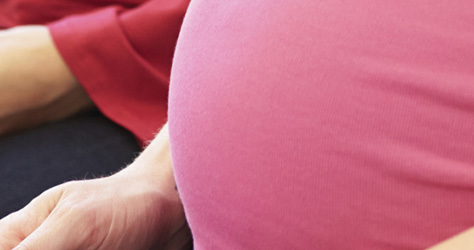Seeing your unborn baby on an ultrasound scan for the first time is an amazing experience and one that you’ll treasure forever.
It’s so exciting to see your little one kicking around and sucking their thumb (yes really!) but there’s also some really important science behind having scans during your pregnancy.
Here’s why you have them, how often you’ll need them and what to expect.
At a glance
- You will generally be offered two scans by the NHS
- Ultrasound scans are used to give you a more precise due date
- They can detect abnormalities in your baby
-

What is an ultrasound and why do I need one?
Ultrasounds use sound waves to build a picture of the baby in the womb and are completely painless – although be warned, the gentle pressing of the sonographer on your belly, plus all the water you’ll need to drink, may mean you need to wee!
This is one of the only ways your doctor can check the development of your baby.
Other reasons why an ultrasound is given include:
- To find the position of your placenta
- To check whether you’ve been blessed with more than one baby
- Find out why you may be bleeding
- To give you a more precise due date
- To detect an ectopic pregnancy
Ultrasound scans are a screening test for conditions affecting your baby and your pregnancy. Sometimes a scan needs to be repeated as not all the information can be obtained. This could depend on the position of the baby on the day, the view the sonographer is achieving and your body mass index.
How many ultrasounds will I have?
Ultrasounds have no known side effects on you and your soon-to-be new arrival and can be carried out at any stage of pregnancy.
If your pregnancy is going normally you’ll be offered two routine scans through the NHS.
If you are found to be expecting twins or more, or your little one isn’t developing as doctors would like, you will be given as many as the experts think you need.
The first time you get to meet your baby on the screen
Unless you choose to pay for a private scan, the first time you’ll see your baby will be at around 12 weeks. This first appointment known as the Dating Scan will give you a better estimation of your due date.
Your appointment will be the same length of time whether you have chosen to screen for conditions or not.
If you have chosen to screen, the sonographer measures the thickness of the nuchal translucency (a pocket of fluid) at the back of your baby's neck. The measurements are then combined with a blood test to check the levels of your protein. Through this combination doctors can estimate the chance of having a little one with Down syndrome and discuss this further with you.
If there is a high chance of your baby having Down syndrome you may want to understand the condition further and explore what life is like for people with Down syndrome and their families. Please visit positiveaboutdownsyndrome.co.uk and Down’s Syndrome Association.
The second time you get to see your little one
The second scan usually takes place between 18 and 21 weeks. It's called the anomaly scan because it checks whether your little one’s organs and bones are developing as they should.
Team pink or blue?
During the 20 week scan you may be given the option to find out whether you’re having a boy or girl (some hospitals have a policy of not offering this, so do check beforehand).
If you want to find out the sex of your baby, tell the sonographer at the beginning of your scan. If the hospital offers this and your little one is co-operating – for example not lying in an awkward position – then they will tell you.
Even if you choose not to find out, be warned little boys do sometimes have a habit of er, showing off, so you may end up finding out accidentally.
What happens during an ultrasound scan in pregnancy?
You’ll be asked to drink around a litre of water or squash about 30 minutes before your appointment – remember you won’t be able to have a wee before the scan as you’ll need a full bladder to give a better picture of your little one. However, keeping your legs crossed is worth it when you see your baby on the screen – we promise.
Once it’s your turn you’ll be asked to lie on your back while the sonographer puts some lubricating gel on your stomach – it can be cold so brace yourself!
A small device is then passed backwards and forwards over your skin, and high-frequency sound is beamed through your abdomen into the womb. The sound is reflected back and creates a picture, which is shown on a TV screen.
Top tip
Take plenty of change with you when you go for your scan. You’ll usually be able to buy pictures of baby, with some hospitals offering this via a machine.
It’s your choice
The dating and anomaly scans are offered to every pregnant woman, but you don't have to accept them. You can choose to have the scans and not to screen for any conditions, or you can choose not to have any scans or screening.